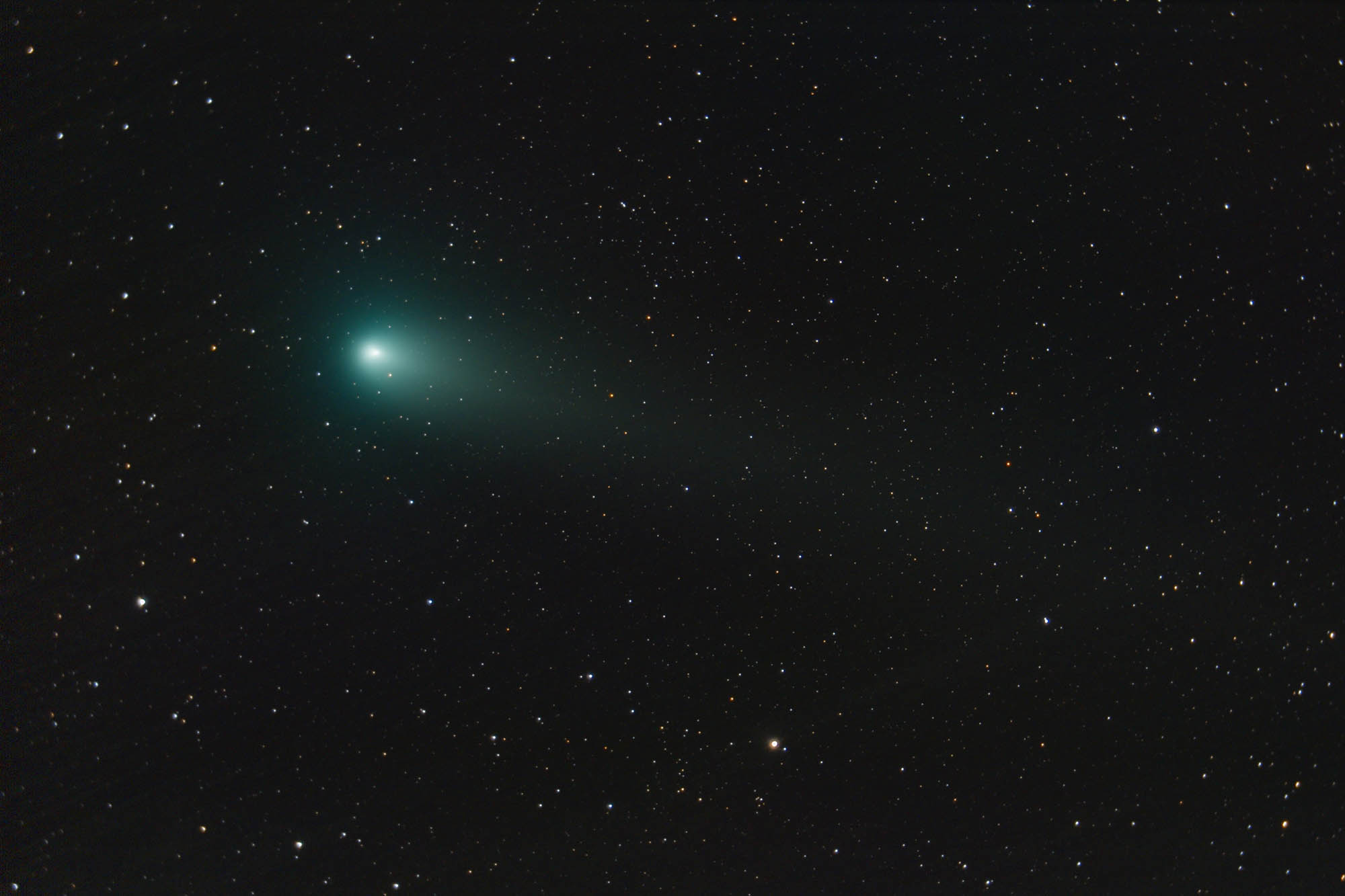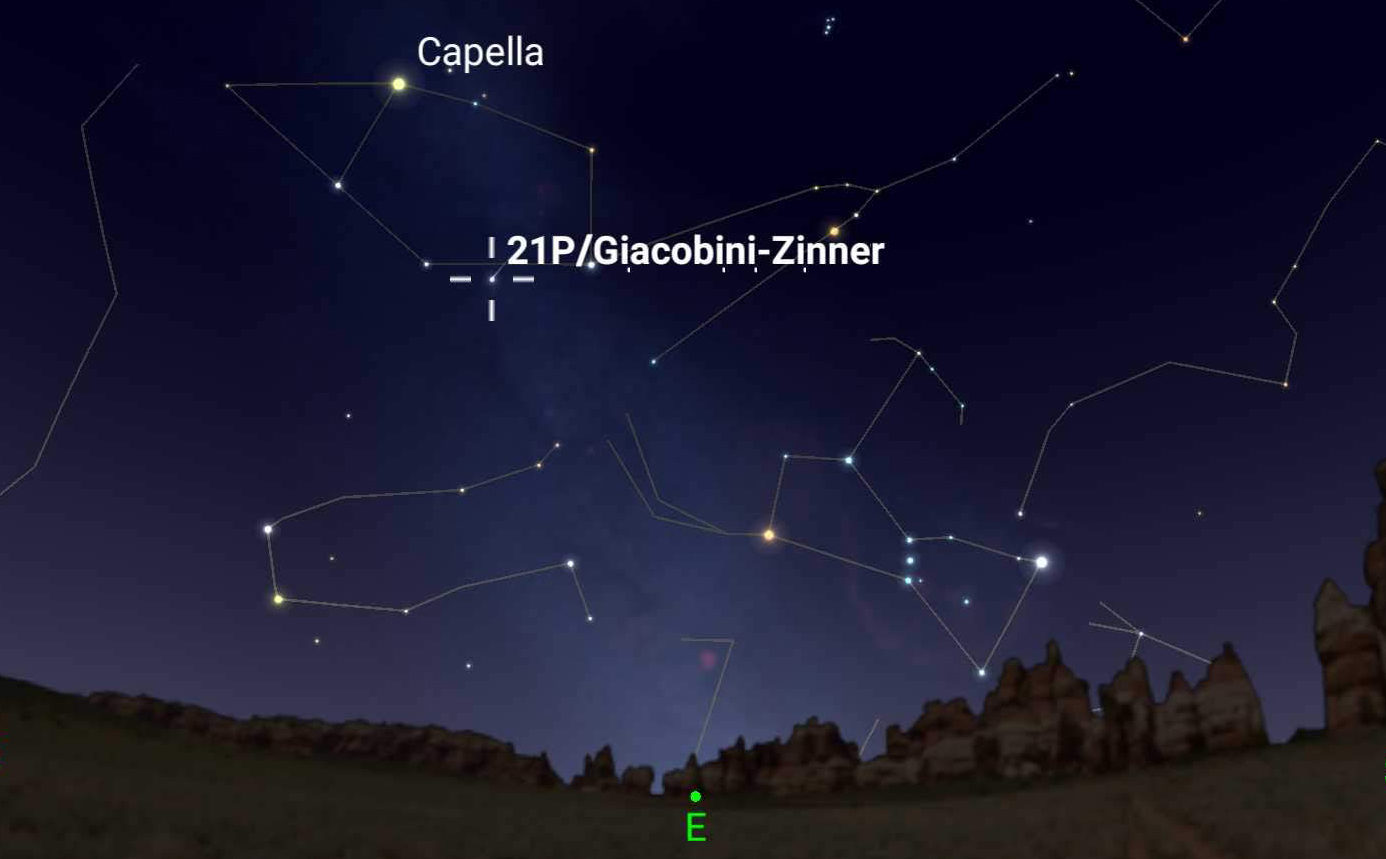How to See the Bright Green Comet 21P in Binoculars on Monday
Want to see a comet whizzing by Earth? A great chance to catch one of these celestial visitors is overnight tonight, when Comet 21P/Giacobini-Zinner will be best visible in binoculars or a telescope.
The comet, also known as "21P," will make its closest approach to Earth at around 2:30 a.m. EDT Monday (630 GMT). The bright-green comet should reach a visual magnitude of 6.5 to 7, according to EarthSky.org. This makes 21P almost bright enough to see with the naked eye — but not quite. [Bright Comets of 2018: When, Where and How to See Them]

To find Comet 21P in the night sky, look east and find the constellation Auriga sometime between midnight and dawn local time. The comet will still be visible even after tomorrow, but it will fade over the coming days. Its exact location from moment to moment is available in NASA's ephemeris calculator.
Comets are small bodies of ice and dust that orbit the sun, just like the planets do. But comets are much smaller than planets, and they travel in highly elliptical orbits. Comet 21P goes around the sun every 6.6 years, and its trail of dust and debris is the source of the annual October Draconid meteor shower.

Meteors are space dust or space rocks that plow into Earth's atmosphere. Meteor showers usually happen when the Earth moves across the path of dust left behind by a comet or asteroid. While some meteor showers produce dozens of "falling stars" or more every hour, the Draconids are fairly weak. The shower is expected to generate only up to eight shooting stars per hour in 2018, NASA meteor expert Bill Cooke told Space.com. [Amazing Photos of Comet 21P/Giacobini-Zinner and Comet 46P/Wirtanen]
Even if you don't own a pair of binoculars or if you miss out on Comet 21P for any other reason, don't worry: You'll likely have the chance to watch another green comet later this year. Comet 46P/Wirtanen will make its closest approach to the sun on Dec. 16, and current predictions say the comet will be visible with the naked eye. You can see more information about 46P in this recent Space.com story. You can also see some pictures of the two approaching comets here.
Follow us @Spacedotcom, Facebookand Google+. Original article on Space.com.
Get the Space.com Newsletter
Breaking space news, the latest updates on rocket launches, skywatching events and more!
Join our Space Forums to keep talking space on the latest missions, night sky and more! And if you have a news tip, correction or comment, let us know at: community@space.com.

Elizabeth Howell (she/her), Ph.D., was a staff writer in the spaceflight channel between 2022 and 2024 specializing in Canadian space news. She was contributing writer for Space.com for 10 years from 2012 to 2024. Elizabeth's reporting includes multiple exclusives with the White House, leading world coverage about a lost-and-found space tomato on the International Space Station, witnessing five human spaceflight launches on two continents, flying parabolic, working inside a spacesuit, and participating in a simulated Mars mission. Her latest book, "Why Am I Taller?" (ECW Press, 2022) is co-written with astronaut Dave Williams.









